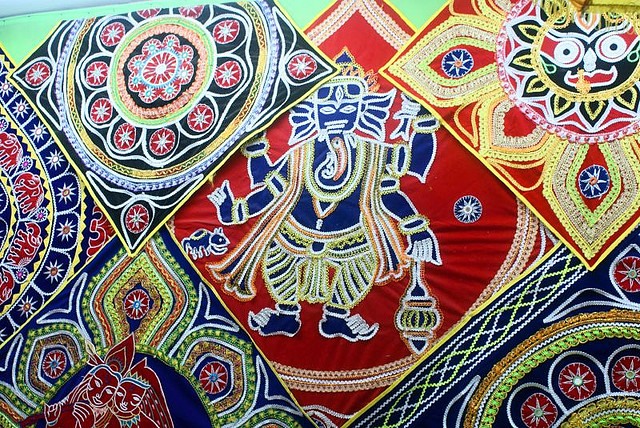Applique Art
'Applique', which is a French term, is a technique by which the decorative effect is obtained by superposing patches of coloured fabrics on a basic fabric, the edges of the patches being sewn in some form of stitchery. It is distinct from what is known as patch work in which small pieces of cut fabrics are usually joined side by side to make a large piece of fabric or for repairing a damaged fabric. Though the form is not unknown in other parts of India, it is Orissa and specially in Pipli that the craft has a living and active tradition continuing over centuries. While the largest number of applique craftsmen are concentrated in Pipli, there are quite a few in Puri and very small numbers in Khallikote, Parlakhemundi and Boudh areas also.

